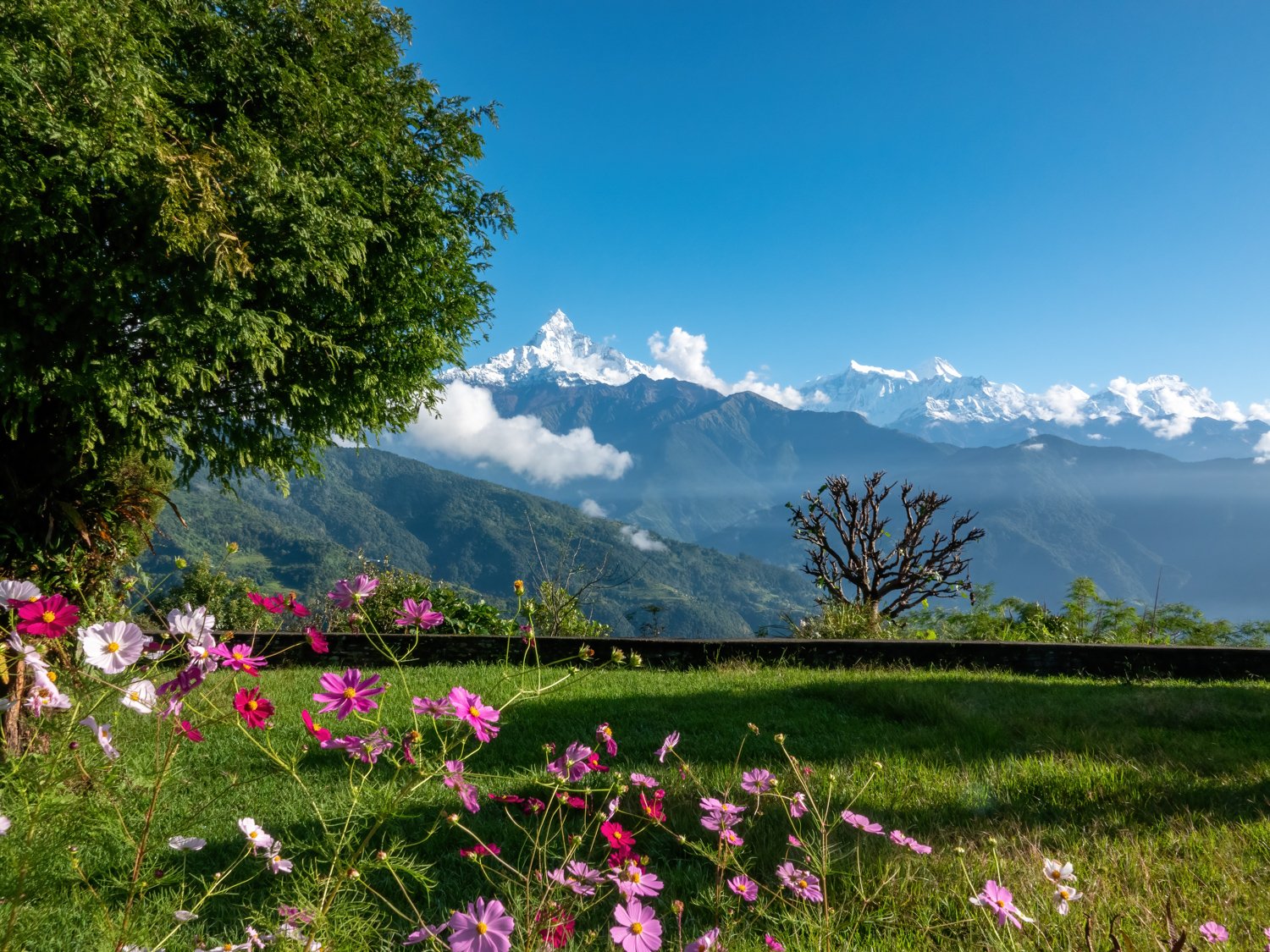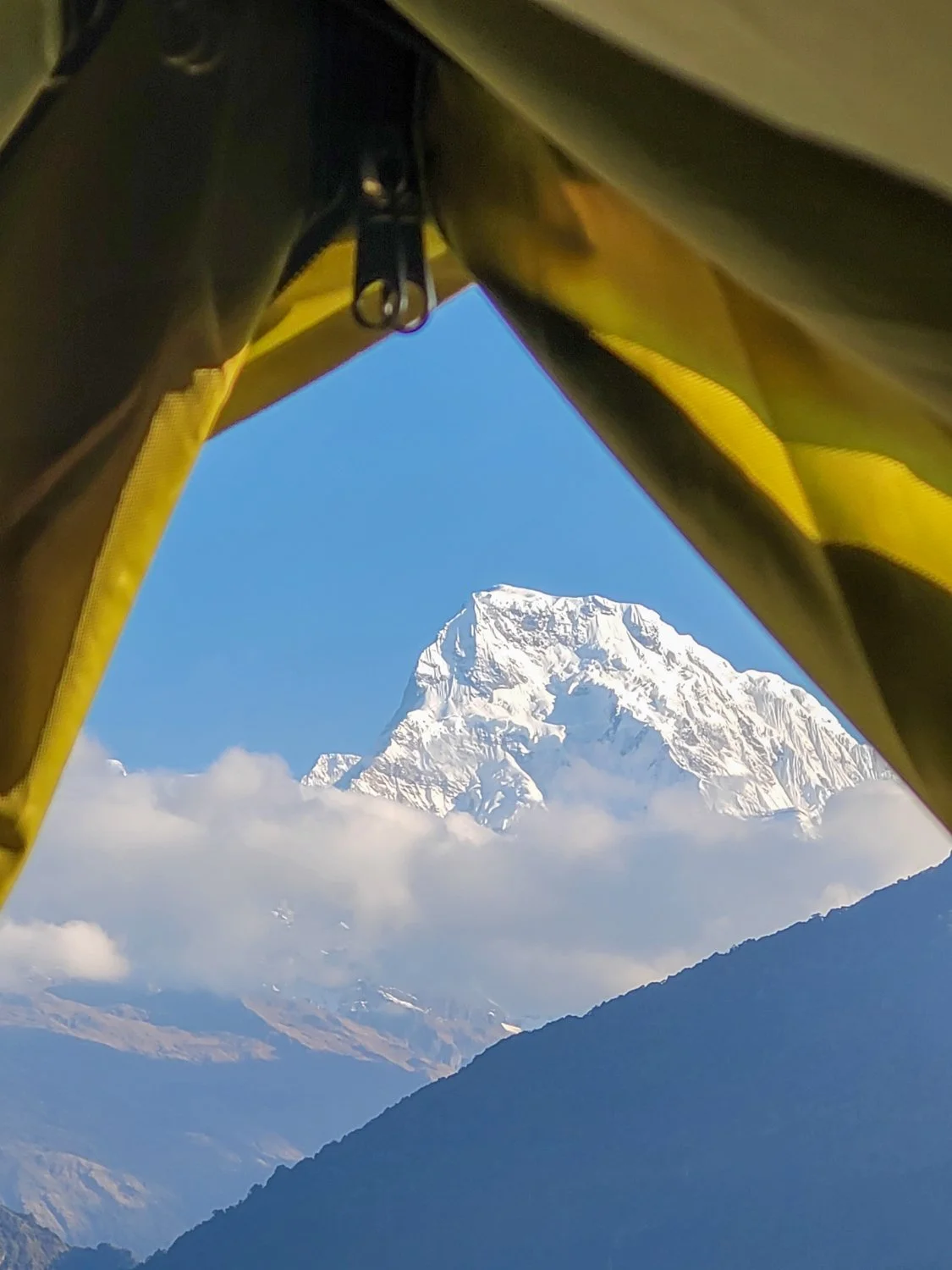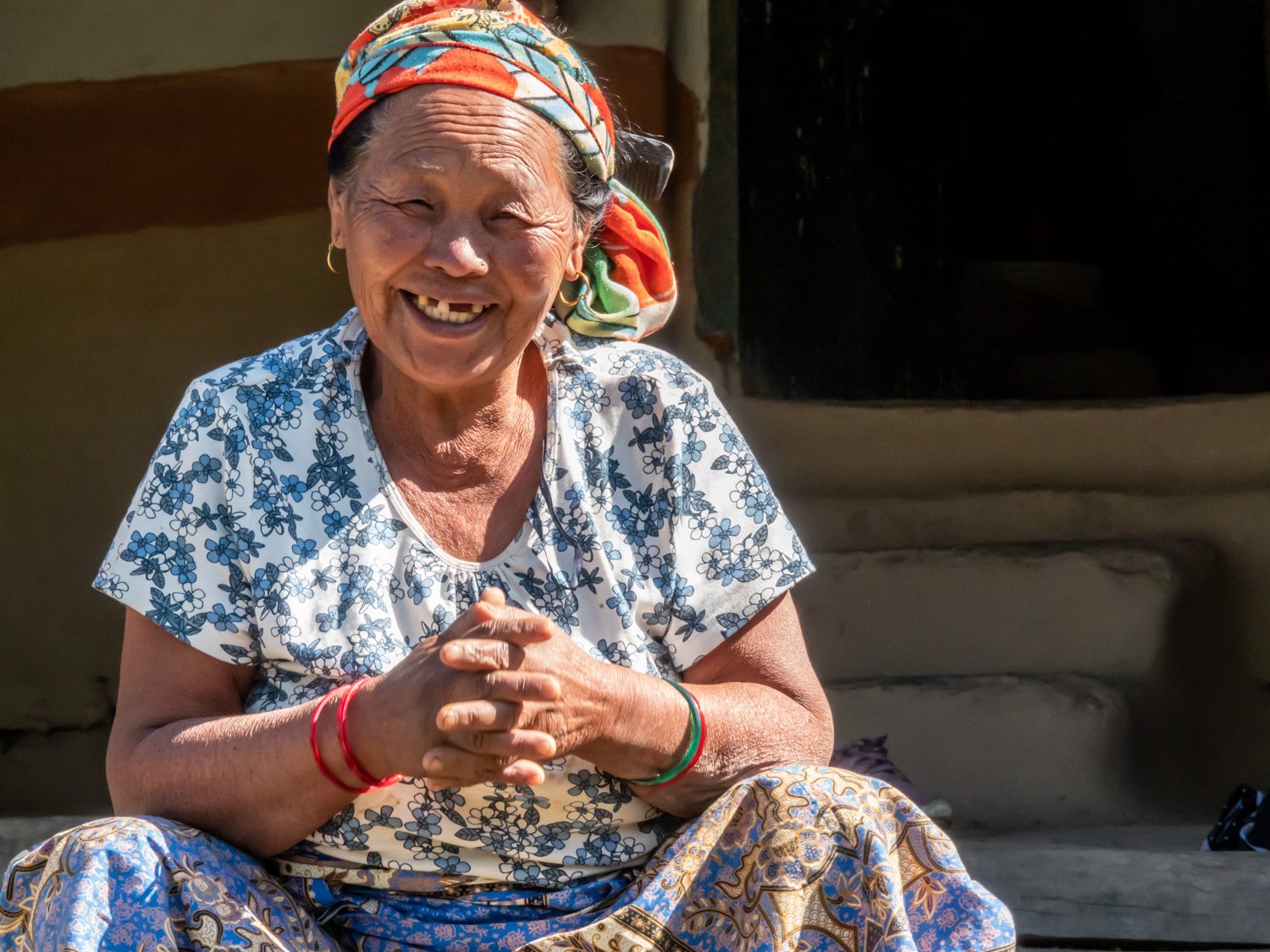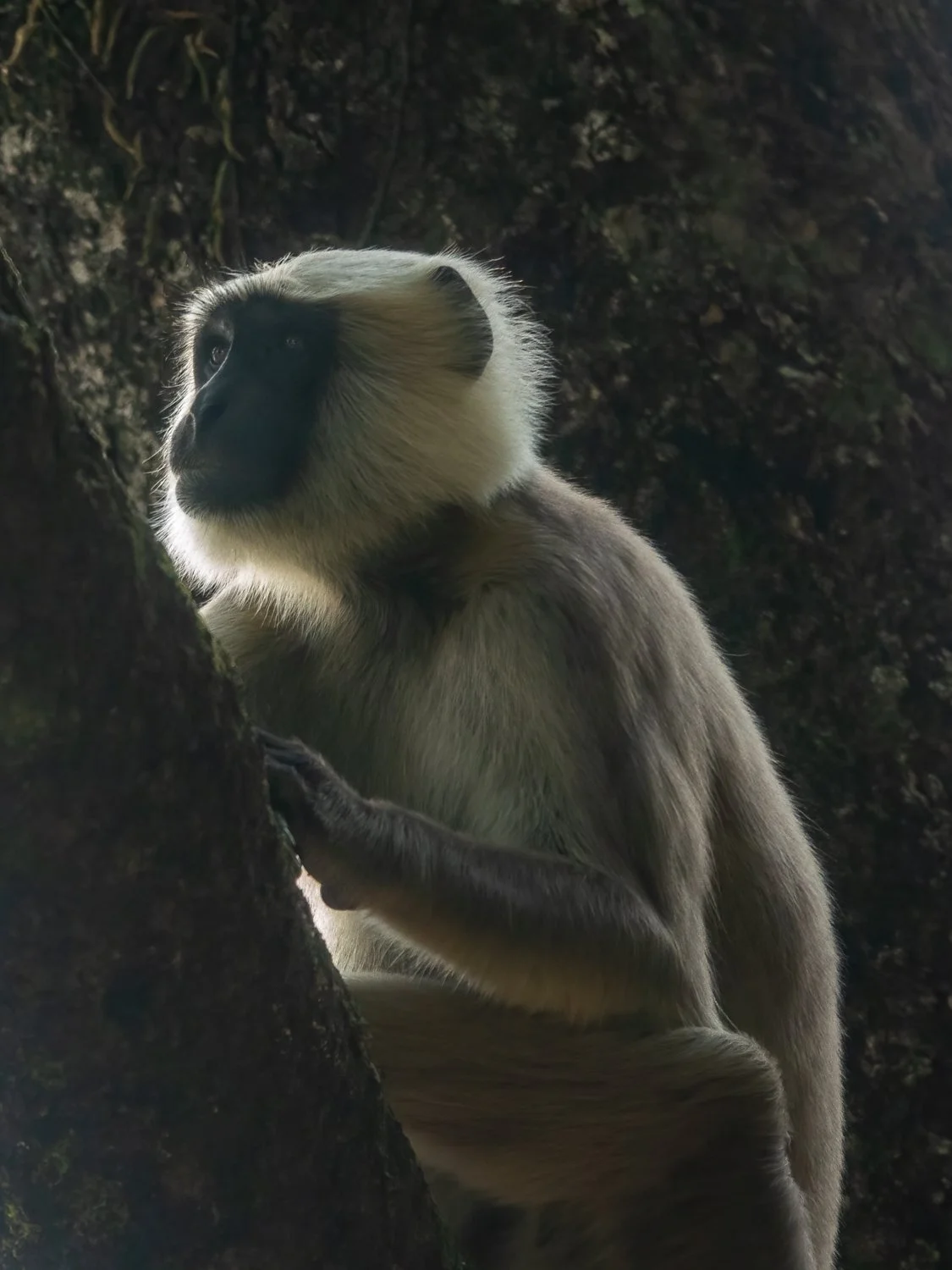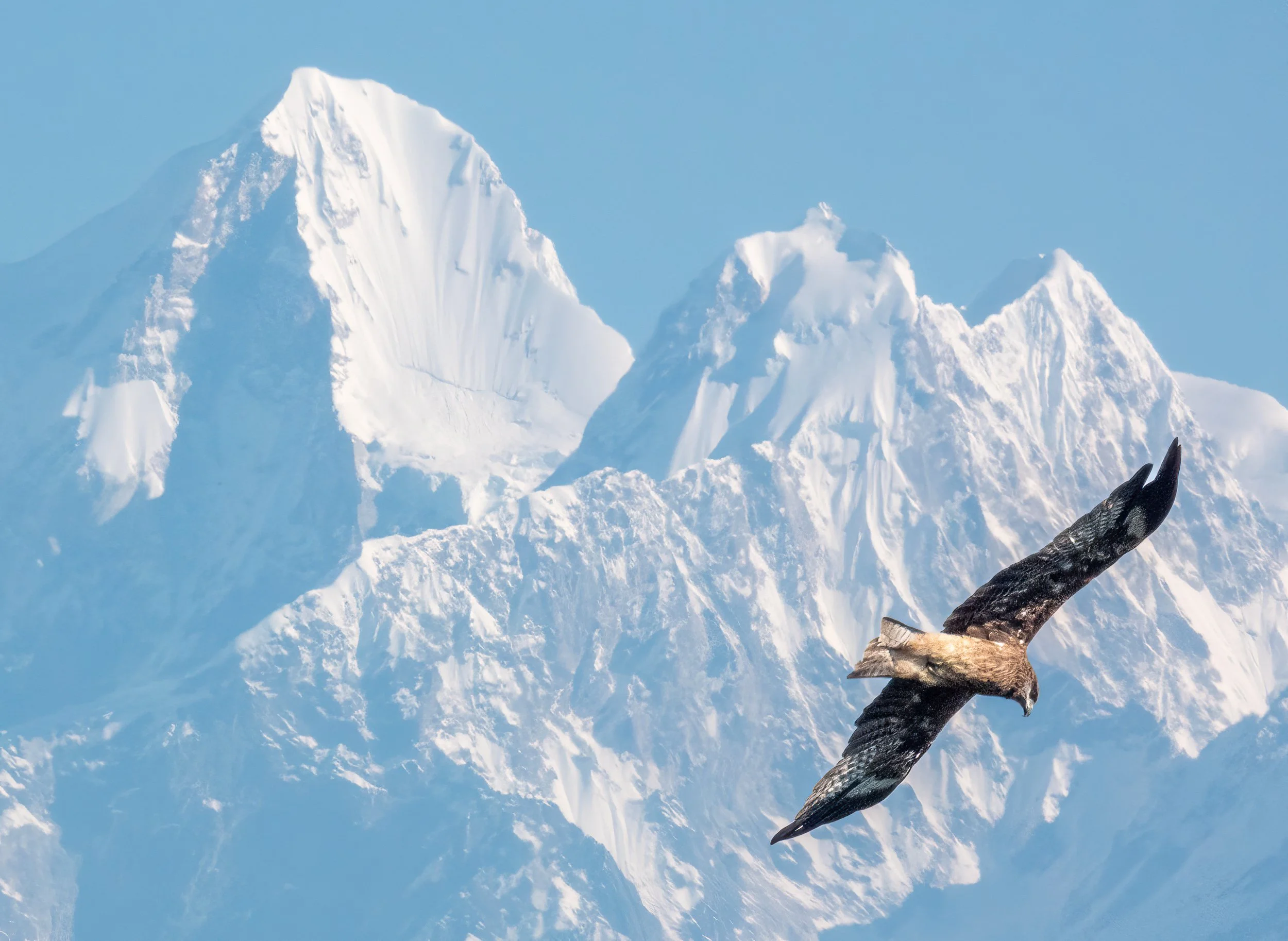Trekking in Nepal
From October 10 to 25, 2022 I joined a World Expeditions trek in the Annapurna region of Nepal. We first met in Kathmandu at the Radisson Hotel in Lazimpat for a briefing. We then flew together to Pokhara (black line) the next morning, took a bus (blue) to Phedi where the trek actually began (red dotted line approximately). For 13 days we trekked with overnight stays at Dhampus, Landruk, Ghandruk, Tadapani, Bayeli, Chistibung, Khopra Ridge (2 nights), Swanta, Upper Phulbari, LesPar and Ghibrang finishing in Nayapul where we returned to Pokhara by bus. During the trek we were south of the prominent Himalayan mountains of Annapurna, Machhapuchhre and Dhaulagiri.
Trekking
Overall the trek covered about 120 miles over 13 days, so an average of 10 miles/day. We started at an elevation of 1130 m (3707 ft) with the highest stay at Khopra Ridge of 3660 m (12,000 ft). For about half of the nights we stayed in eco-lodges in the small villages along the way. In the other half we stayed in tents that World Expeditions had set up in campsites. The tents were all spacious two-man tents with 2 cots and tall enough to stand up. Except for the two married couples in the group, everyone had a tent to themselves. While the lodging is rather rustic, it was comfortable and warm enough even at the highest altitude.
A highlight of the trek was the meals prepared by our cooking crew. Almost every lunch and dinner started with a hot soup. There was usually some kind of bread (naan, chapati, dosa, papadum, etc.) or starch that they baked or fried on site. The two porters who carried the kitchen utensils (including propane gas tank and grill!) were amazing, as were the other 6 porters who helped to carry our gear during the trek. There was more than enough food at every meal with the leftovers going to the rest of the crew. Apparently most other trekking companies provide many meals of Dal Bhat but we only saw one serving of this iconic Nepali hiking food.
Each trekker was given a large green expedition bag containing the essentials for hiking to Annapurna: a down sleeping bag, down parka and toilet paper. In addition we put the rest of our gear in the bag up to a limit of 15 kgs (33 lbs). The porters carried two green bags plus other bags, probably carrying about 80 lbs! I had to skimp on extra clothes as I had them help carry a camera tripod which turned out to be essential for the moonlit shots of the mountains.
Unloading the bus at Phedi to start the trek
One of the two large baskets containing cooking implements
The initial climb from Phedi
Looking down from the first rest site to the road we took from Pokhara to Phedi.
Sea of clouds
Our trekking group plus guides (from Denise Clark)
There were 6 porters who helped to carry our gear. They are each carrying at least 80 lbs!!
The chief cook (right) and a porter with kitchen utensils. Note the fancy footwear and lack of shoulder straps.
The weather on the first few days of the trek was generally overcast and cloudy with some rain showers. We were actually quite fortunate because the Himalaya region had received unusually heavy rainfalls for the weeks prior to our trek. Normally the weather is dry during this season but this year the monsoon season was longer then normal. The days before our trek began there were news reports of 8 trekkers missing in landslides in the Manaslu region and all treks in the Everest region were canceled. This resulted in a big bottleneck of trekkers trying to return to Kathmandu from Everest because their treks were canceled. In fact one of the trekkers in our group was in this situation and joined us when her Everest trek was canceled.
Signs of past landslides were evident throughout the trek
Remnants of a landslide across the trekking path
During the first few days we were trekking on a popular path so there were numerous other trekkers and small villages. Almost everyone, even small children, greeted you with a hearty smile and “Namaste” with the hands in prayer.
Namaste!
The terrain during the first few days was typical rainforest: lots of ferns, moss and rainforest hardwood trees. The weather was warm during the day so one could hike in shorts though mosquitoes were a worry with an outbreak of Dengue fever in Kathmandu.
One of many stream crossings
An easy stream crossing
The general weather pattern was clear skies in the morning with overcast cloudy conditions in the afternoon. Since I was still very much jet-lagged when we began the trek, I often woke up at 3 or 4 AM. The moon was a few days past full so when I looked outside the mountains were glowing from the moonlight. I had brought a tripod along, so this was the perfect opportunity to take long exposure shots of the mountains lit by moonlight. I did this for several successive mornings until the moon was so dim that it was difficult to focus the camera. I would also stay up to catch the sunrise on the mountains
Annapurna South (left) and Machhapuchhre (Fishtail, right) by moonlight. Ursa Major and Polaris are easily seen.
Our tents and Annapurna South by moonlight
Fishtail (Machhapuchhre) by moonlight
First light on Annapurna South
Annapurna South
Rainer and I waiting for first light (from Sally Ingleton)
Much of the land was terraced and planted with rice or millet
Nice view at breakfast of Annapurna South from Tadapani
There were many waterfalls along the route.
Rainer and Bonnie at a stream crossing
Annapurna South on a windy day
Khopra Ridge
The high point on our trek was a two-day stay at Khopra Ridge which had a wonderful panorama view of Dhaulagiri and the Annapurna range. From the lodge at Khopra there was an optional day hike to Khayer Lake which I chose to decline. Only Rainer and June accompanied Sanjay on this very difficult >10 hour hike. I was experiencing a light headache and thought that a day of rest would do me good. A group of us hiked up toward Khayer but then all of the mountains clouded over so I returned. Apparently those that went up to the lake were actually above the cloud cover and got. spectacular views of Annapurna from up close. I had brought along high altitude sickness medicine (Diomox) and took a light dose on the day before our ascent to Khopra. This probably helped a bit.
Panorama from Khopra Ridge of Dhaulagiri (l) and the Annapurna range
Rainer contemplating Dhaulagiri and other mysteries of life from Khopra Ridge
Our guides Sanpar, Sanjay, and Sanjiv
Sally and Dhaulagiri
The Kali Gandaki Gorge divides Dhaulagiri (center) from Annapurna (not visible to right) and is said to be the deepest gorge in the world.
Cyndi contemplating the cosmos from Khopra Ridge
Alpenglow sunset over Annapurna Fang (l) and Annapurna South (r) on a rare clear day
View of Dhaulagiri from my sleeping bag
The descent
After two days at Khopra Ridge we started back down. Of course each day’s trek was a mixture of descending down a valley and ascending back up the other side. I found these long downward treks to be more difficult on my aging knees than the long ascending treks which were more tiring but less stress on the knee. It wook us five days to hike back down to the town of Nayapul where we caught a bus back to Pokhara.
People
All of the people we encountered along the way were invariably friendly. They all greeted us with a cheerful “Namaste”, but unfortunately without our guides serving as interpreters, we could not carry on a real conversation. In the lodges that we stayed in, most of the owners could manage some English so I was able to converse with several of them.
Most of our interaction with the Nepali on our trek was with the three guides, Sanjay, Sanpar and Sanjiv. Usually one of them was always the first in line and directed us along the right path at the many intersections, one stayed back with the slowest and the third hiked in the middle to provide assistance where necessary. Usually this was at stream crossings or particularly steep rocky bits. The 3 guides were also waiters during meals and served the excellent food prepared by our kitchen staff. In general we did not have much opportunity to communicate with the other 9 porters as they hiked very fast so that they were at each destination before we got there. For lunch and dinner spots, they were then able to prepare a hot soup.
One night the crew was in a festive mood and brought out drums and a guitar to sing and dance. I did not realize until later how much the Nepali like to sing and dance, especially during the Diwali Festival.
The grandmother of the children in this family where we lingered for a while.
June conversing with a friendly local Nepali hiking along the same route
A Nepalese swing
What a view for breakfast!!
Reflections of Dhaulagiri
Dhaulagiri framed by June’s glasses
Sunset over Machhapuchhre from Ghibrang
Terraced rice fields
Our kitchen crew and guides
Threshing rice in the terraced fields
They baked a cake for Bonnie’s birthday
Oops!!
Dhaulagiri at sunrise (from Sally Ingleton)
Near the end of the trek on the descent to Nayapul
A traditional hanging bridge at Nayapul
The host of our luncheon spot at Nayapul and his friendly daughter
On the bus back to Pokhara
The bus ride back to Pokhara marked the end of our trek and was celebrated in the bus by the crew.
Flora and fauna
The trekking trails that we took are all well-worn, historic trails so there was very limited opportunity to see wildlife. The beast of burden in the numerous terraced fields was the water buffalo so there were quite a few encountered along the way, along with numerous pieces of their discarded ballast. On the trek between Tadapani and Bayeli we saw a troop of langur monkeys in the forest at a considerable distance. The other notable wildlife were yaks and goats, but these are probably domesticated though we did not always see a herder with the animals.
Langur monkey
Backlit langur monkey
Black faced laughingthrush
Mountain goats
Yak
Yaks on the move
Water buffalo on alert
Backlit grass
Backlit bamboo
A Nepali swing
Against the Himalayas
I like to take photos of nature and wildlife so that was a point of emphasis even in the Himalayas where I was not expecting to see much wildlife. Since there were occasionally eagles and hawks flying overhead, these were a natural target. While eagles soaring overhead can be interesting images, a blue sky or cloudy background is not very interesting so I wanted to catch eagles against the mountains. I thought this would be easiest when we were nearest the mountains where they would dominate the skyline. However, I was not able to get any good shots when we were high in the mountains. Instead, I captured many shots of ravens against the mountains. Ironically when we returned to Pokhara, I had good luck at the airport which had a viewing platform and several eagles and kites that would occasionally wander low enough to shoot against the mountains. While the peaks were over 20 miles away, a long telephoto lens can make them appear close.
Black kite soaring overhead
A better background but it doesn’t suggest Nepal
Black kite against Machhupuchhre
Black kite against Mt. Dorje Lhakpa from Nagarkot
When we were leaving Khopra Ridge, we encountered a herd of yaks grazing on the grassy slopes. As we watched the herd slowly moved along the ridge until they were silouetted against Annapurna South. This was an unexpected and fortuitous sighting!
Yaks against the mountain
Yaks against Annapurna South
Overall, I found the trek to be a wonderful experience. It was exhilarating and physically challenging but the guides emphasized hiking at our own pace which was always doable. There were only a couple moments when I questioned why I signed up for this trek ! I would highly recommend the World Expeditions as a trekking company. They were very well organized and hired excellent guides and porters. One negative about hiking in Nepal, though, is the local attitude toward littering. The environment is so gorgeous but there is utter disregard for taking care of ones litter. It isn’t so bad on the hiking trails, but any road that has car/truck traffic has garbage strewn all over. On several occasions when we were driving behind a tourist bus, you would see garbage flying out of the windows regularly. It seems like the locals regard the highway as the garbage dump and unfortunately that’s what it looks like.
Please note: All text and photos are copyrighted to Tom Yin. You are welcome to share the URL, however re-production of text or photos is not permitted. If you would like to feature this story, contact me and I would be happy to provide you with details, photos, text etc. Thanks!




































